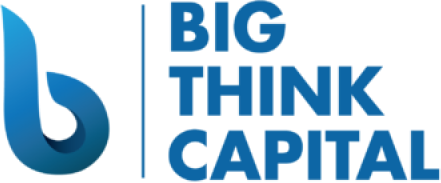How to Manage Your Business’s Financial Health Amid Rising Interest Rates
Estimated Reading Time: 6 minutes
- Understand the impact of rising interest rates on your business.
- Implement effective working capital management strategies.
- Build strong relationships with financial institutions.
- Optimize lines of credit for better financial resilience.
- Seek expert advice to navigate financial challenges.
Table of Contents
- Understanding Rising Interest Rates and Their Impact
- Strategies for Effective Working Capital Management
- Building Strong Relationships with Financial Institutions
- Optimizing Lines of Credit for Financial Resilience
- Conclusion
- FAQ
Understanding Rising Interest Rates and Their Impact
Interest rates have a direct impact on borrowing costs. When rates rise, the cost of loans increases, which can squeeze cash flow and affect profitability. The Fed’s actions in late 2023 indicate that rates may remain elevated through early 2025 as the government combats persistent inflation (Source: Federal Reserve).
For small businesses, higher interest rates mean:
- Increased costs on existing loans.
- Higher payments on new borrowing.
- Potential constraints on growth due to reduced access to capital.
The challenge is to navigate these changes while ensuring healthy cash flow, maintaining strong relationships with financial institutions, and optimizing your financing options.
Strategies for Effective Working Capital Management
To mitigate the adverse effects of rising interest rates, effective working capital management is essential. This involves managing your business’s short-term assets and liabilities to ensure sufficient cash flow for everyday operations. Here are some strategies to consider:
Monitor Cash Flow Regularly
Regular cash flow analysis helps detect trends and anticipate potential shortfalls. Keep track of key indicators such as:
- Days Sales Outstanding (DSO): Measures how quickly customers pay their invoices.
- Inventory turnover: Indicates how efficiently your inventory is managed.
- Current ratio: A liquidity ratio that measures a company’s ability to pay short-term obligations.
Implementing cash flow forecasting can help you anticipate cash needs, ensuring you have sufficient liquidity to weather financial storms.
Optimize Inventory Management
Excess inventory ties up cash that could otherwise be utilized for operational needs. Consider:
- Conducting regular inventory assessments to identify slow-moving items.
- Implementing Just-In-Time (JIT) inventory systems to reduce stock levels and free up cash.
- Utilizing technology solutions for more accurate demand forecasting.
By optimizing inventory management, you can enhance cash flow and reduce the need for additional financing.
Strengthen Receivables Management
Efficient management of accounts receivable can significantly improve cash flow. Here are some practical tips:
- Offer discounts for early payments to encourage prompt customer settlements.
- Segment customers by payment behavior and tailor collection strategies accordingly.
- Use digital invoicing solutions and automated reminders to streamline the billing process.
Improving receivables can help you access cash sooner, reducing reliance on credit options in a rising interest rate environment.
Building Strong Relationships with Financial Institutions
Strong relationships with banks and lenders play a vital role in managing your financial health. Here’s how to strengthen these relationships:
Communicate Transparently
Keeping your bank informed about your business’s financial health and any challenges you may face is crucial. Regular communication helps build trust and can lead to more favorable loan terms, especially when interest rates are high.
- Schedule regular check-ins with your banker.
- Provide updates on your financial status and operational changes.
Understand Your Financing Options
Being knowledgeable about the various financing products available can help you make informed decisions. Some common options include:
- SBA loans: Traditionally have lower interest rates but may require longer approval processes.
- Merchant cash advances (MCA): Quick funding, but typically comes with higher rates.
- Lines of credit: Provide flexibility for short-term needs and can be more cost-effective than traditional loans.
Understanding how each option fits into your business model can help you negotiate better terms and utilize financing wisely.
Maintain a Strong Credit Profile
Your credit score is a critical factor in securing favorable financing options. To enhance your business credit profile:
- Pay down existing debts to lower your credit utilization ratio.
- Ensure all bills, including taxes, are paid promptly to reflect your reliability.
- Regularly review your credit report for inaccuracies and resolve any issues immediately.
A strong credit profile not only helps you secure financing at better rates but also builds confidence with lenders.
Optimizing Lines of Credit for Financial Resilience
Lines of credit can be an excellent resource for managing cash flow, especially in a high-interest rate environment. Here’s how to optimize this financial tool:
Evaluate Your Credit Needs
Determine the amount of credit you truly need based on your cash flow analysis. Borrowing too much can lead to unnecessary interest payments, while too little can leave you exposed to cash flow crises.
Utilize Credit Wisely
- Use lines of credit primarily for short-term financing needs, such as unexpected expenses or seasonal cash flow gaps.
- Consider revolving lines of credit to maintain flexibility as your business fluctuates.
Reassess Regularly
As your business grows and market conditions change, reassess your credit needs. Regular evaluations help ensure that your financial strategy is aligned with your current operational realities and future goals.
Conclusion
In summary, as interest rates rise, proactive financial management becomes imperative for small business owners. By effectively managing working capital, building solid relationships with banks, and optimizing lines of credit, you can mitigate the adverse effects of rising borrowing costs.
As you navigate these challenges, remember that the right support can make all the difference. At Big Think Capital, we understand the intricacies of small business financing and are here to assist you in finding the right funding solutions to keep your business thriving.
Call to Action
If you’re looking for personalized advice on managing your business’s financial health during these challenging times, connect with our experts at Big Think Capital. Visit us at bigthinkcapital.com or speak with a funding expert today. Together, we can put your business on the path to success, even amid rising interest rates.
FAQ
How can I manage my business finances amid rising interest rates?
Effective working capital management, building strong relationships with banks, and optimizing your lines of credit are crucial strategies.
What are the impacts of rising interest rates on small businesses?
Increased costs on loans, higher payments on new borrowing, and potential constraints on growth due to reduced access to capital.
Why is working capital management important?
It ensures you have sufficient cash flow for everyday operations, which is vital during times of financial uncertainty.
How can I strengthen relationships with financial institutions?
Communicating transparently, understanding your financing options, and maintaining a strong credit profile are essential.
When should I evaluate my lines of credit?
Regular evaluations should occur as your business grows and market conditions change to ensure alignment with operational realities.






